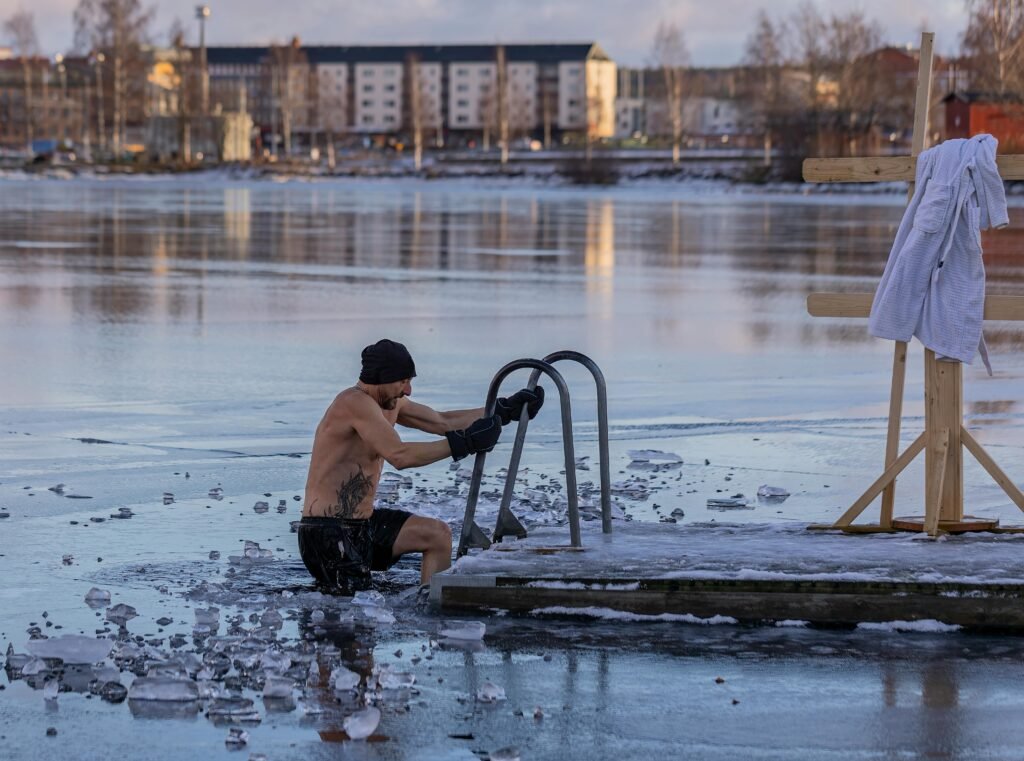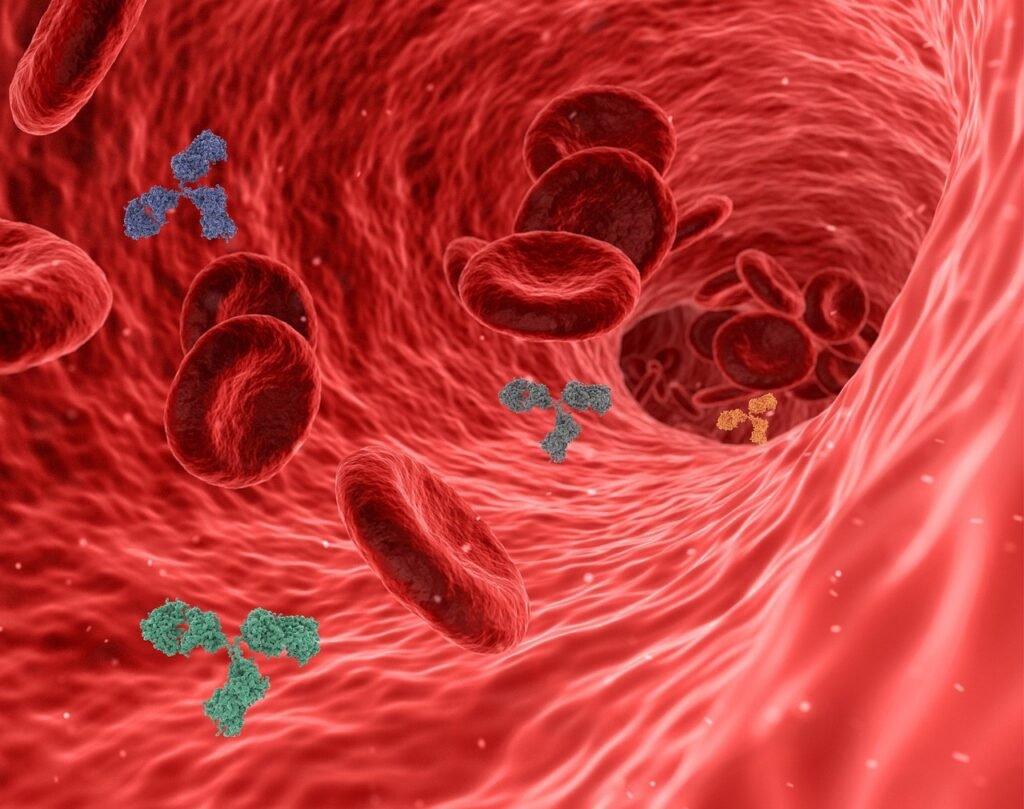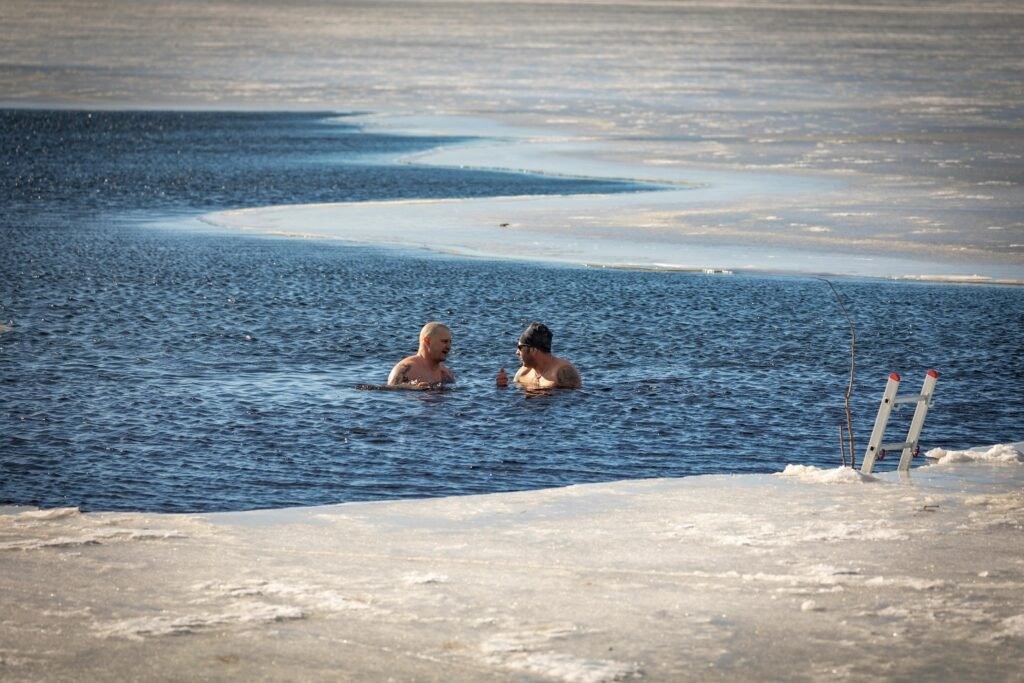- Unlocking the Benefits of Cold Water Therapy for Athletes
- Re-Introduction to Cold Water Therapy
- How Cold Water Therapy Works
- Additional Benefits for Athletes
- Mental Resilience and Stress Management
- When to Avoid Cold Water Therapy
- Best Practices for Ice Bath Usage
- Personalizing Cold Water Therapy
- Conclusion: Is Cold Water Therapy Right for You?
Unlocking the Benefits of Cold Water Therapy for Athletes
A Comprehensive Guide
Re-Introduction to Cold Water Therapy
Cold water therapy has emerged as a widely recognized method for enhancing athletic performance and recovery. Athletes, from elite competitors to everyday fitness enthusiasts, are increasingly incorporating this practice into their routine to optimize recovery protocols and manage exercise-induced stress. Since the weather is slowly getting cold again, we figured that we would touch up on the topic once again.
What is It?
Defined as exposure to cold water in various forms, such therapy encompasses techniques such as ice baths, cold showers, and advanced cryotherapy methods. Each approach offers unique benefits, enabling sports practitioners to tailor their recovery strategies according to individual needs.

Ice baths are perhaps the most well-known form, involving submersion in ice-cold water for a specific duration. This method is commonly utilized immediately after rigorous physical activity, as it is believed to reduce inflammation, alleviate muscle soreness, and expedite recovery. Cold showers, on the other hand, can be incorporated more seamlessly into daily routines, providing a practical alternative for those who may not have access to dedicated recovery facilities.
Cryotherapy represents a more advanced technology within cold water therapy, where individuals expose their bodies to extremely cold temperatures for a short duration. This method has gained traction in professional sports due to its potential for promoting tissue healing and muscle recovery, though admittedly is less available, so we wont cover it here. If you would like to see a post covering Cryotherapy however, leave us a comment at the bottom of the post, and we will try and cover it for you.
Lastly, natural outdoor plunges, such as cold water swimming in lakes or rivers, offer a therapeutic experience in a more organic setting. Besides the physical benefits, these outdoor methods can elevate mental wellness and promote a deeper connection with nature. Despite being highly accessible and cost-effective, the effectiveness can vary greatly depending on water temperature and individual tolerance levels.

As the popularity of cold water therapy continues to rise, its role in enhancing athletic performance and recovery is becoming better understood. This guide explores the emerging science behind cold water therapy and its multifaceted benefits for athletes committed to optimizing their physical capabilities.
If you would like to see our guide on how to set up an ice bath at home, click on this link here.
How Cold Water Therapy Works
Cold water therapy, widely adopted by athletes for its recovery benefits, operates on several physiological principles that effectively aid in muscle recovery and injury rehabilitation. When the body is exposed to cold water, it experiences a process known as vasoconstriction. This phenomenon occurs as blood vessels narrow, which leads to a decrease in blood flow to the affected areas. As a result, there is a significant reduction in swelling and inflammation, common reactions following strenuous exercise or injury.
Following the cold exposure, once the body returns to its normal temperature, a process called vasodilation takes place. During vasodilation, blood vessels expand, allowing an increased flow of blood. This heightened circulatory response is essential because it facilitates the delivery of oxygen and nutrients to the muscles while also aiding in the removal of metabolic waste products, which can contribute to muscle soreness and fatigue. Studies indicate that these alternating processes of vasoconstriction and vasodilation are critical in enhancing recovery times and alleviating delayed onset muscle soreness (DOMS).
Research has continuously supported the efficacy of cold water therapy. In a prominent study published in the *Journal of Sports Sciences*, athletes who engaged in cold water immersion reported significant reductions in DOMS compared to those who rested without such intervention.
The physiological responses triggered by cold water immersion—specifically, vasoconstriction followed by vasodilation—play a central role in minimizing inflammation and promoting muscle recovery. The compelling evidence provided by various studies reinforces the effectiveness of cold water therapy as an essential recovery tool within athletic training and rehabilitation programs.
Additional Benefits for Athletes
Beyond physical recovery, cold water therapy is also linked to improved mental resilience. The practice of exposing oneself to cold conditions challenges both the body and mind, fostering a greater tolerance for discomfort. Athletes often report increased focus and enhanced mental clarity following cold water exposure, making it a valuable tool not just for recovery but also for mental fortitude. Research in the field of sports psychology supports this, highlighting that athletes who engage with challenging physical experiences tend to have better coping strategies during high-pressure competitions.

Additionally, cold water therapy may offer potential immune system benefits. Some studies have suggested that regular exposure to cold can lead to increased white blood cell counts, thus enhancing the body’s ability to fight off infections. This is particularly important for athletes, as consistent training can sometimes lead to a dip in immune function, making individuals more susceptible to illness.
Another area of interest pertains to metabolic benefits. Cold exposure has been shown to stimulate brown fat activation, which may improve metabolic rates and aid in body composition management. Consequently, athletes striving for optimal performance can leverage cold water therapy not only for recovery but also as a supportive strategy for their overall health.
Mental Resilience and Stress Management
Cold water therapy is increasingly recognized for its profound effects on mental resilience and stress management among athletes. The practice involves exposing the body to cold temperatures, which can initially trigger discomfort. However, this discomfort serves as a catalyst for developing psychological strength. Athletes who regularly engage in cold exposure often report enhanced tolerance to stress, ultimately translating into improved performance under pressure.
One key aspect of cold water therapy is the necessity of breath control. Upon immersion, the body instinctively reacts to the shock of cold, often leading to rapid, shallow breathing. Overcoming this instinctive response through controlled breathing has been shown to significantly bolster mental fortitude. By practicing mindful breathing techniques during cold exposure, athletes learn to maintain composure and regulate their physiological responses. This mastery over breath not only reinforces their ability to manage stress but also enhances overall mental clarity.

Moreover, cold exposure activates the parasympathetic nervous system post exposure, which plays a crucial role in promoting relaxation and recovery. This activation counterbalances the stress induced by training and competition, allowing athletes to enter a more tranquil state of mind after their cold exposure.
This state can improve focus and mental agility, essential attributes for athletes facing high-stress environments, such as competitive events where performance anxiety could hinder results. The interplay between cold water therapy and mental resilience can foster an athlete’s ability to remain calm and assertive under duress.
Incorporating cold water therapy into training regimens not only aids in physical recovery but also cultivates a robust mindset adept at handling adversity. As athletes continue to explore and embrace these techniques, the intersection of physiological response and psychological strength becomes apparent, underscoring the comprehensive benefits of such practices in athletics.
When to Avoid Cold Water Therapy
Cold water therapy, while widely recognized for its potential benefits in recovery and performance enhancement, is not universally applicable for all scenarios. Certain training conditions can render cold water immersion counterproductive or even detrimental to an athlete’s progress. Understanding when to avoid this therapy is crucial for optimizing athletic performance and muscle development.
One significant scenario where cold water therapy may be best avoided is immediately following heavy hypertrophy sessions. Engaging in high-volume resistance training aims to induce muscle hypertrophy, a process crucial for muscle growth. Cold water immersion after such workouts can hinder this process by blunting the inflammatory response that is necessary for muscle repair and growth. Studies indicate that reducing this inflammation through cold exposure can diminish cellular signaling pathways, which are essential for muscle adaptation.
Furthermore, if the primary goal of training is to increase muscle size and strength, athletes may find that cold water therapy diminishes the effectiveness of their efforts. Research suggests that post-exercise cold immersion can lead to decreased muscle protein synthesis, which is critical to muscle recovery and growth. Therefore, for athletes focused on hypertrophy, it might be more beneficial to allow the natural inflammatory process to proceed without interruption.
Additionally, competitive athletes should consider the timing of their cold water therapy in relation to important competitions or events. Utilizing cold water immersion too close to a performance may negatively impact neuromuscular function, thereby affecting timing, agility, and overall performance outcomes. Therefore, careful planning regarding the use of cold water therapy around intense training or competition schedules is essential to prevent any detrimental effects.
Best Practices for Ice Bath Usage
The utilization of ice baths has become increasingly popular among athletes seeking effective recovery methods. To optimize the benefits of cold water therapy, it is essential to adhere to some best practices that ensure an efficient and safe experience.

One of the primary considerations is the temperature of the water. Typically, the recommended temperature for an ice bath ranges from 50°F to 59°F (10°C to 15°C). This temperature range allows for adequate recovery without excessively shocking the body, which can lead to potential negative effects.
Another critical aspect is the duration of immersion. Most guidelines suggest that athletes should remain in the ice bath for about 10 to 15 minutes. Immersion for this period allows for effective vasoconstriction, which helps to reduce inflammation and muscle soreness following intense physical exertion. However, it is essential to monitor how your body responds. Some athletes may feel discomfort or numbness, indicating that it may be time to exit the bath. Following immersion, it is advisable to transition to a warm environment gradually to encourage blood flow, effectively aiding recovery.
Timing is also crucial when it comes to the implementation of ice baths. Athletes should consider scheduling ice baths 4-6 hours post-workout for maximum recovery benefits, or perhaps on a day that the athlete is not training. This timeframe is optimal as it helps mitigate post-exercise muscle soreness while enhancing overall recovery. Additionally, athletes should be cautious about using ice baths immediately before workouts, as this can potentially reduce muscle performance due to decreased blood flow and stiffness.
By following these best practices—maintaining the right temperature, adhering to appropriate duration, and timing the immersion correctly—athletes can effectively maximize the recovery benefits of ice baths while minimizing any associated risks.
Personalizing Cold Water Therapy
Cold water therapy offers a multitude of benefits for athletes, but its effectiveness is often maximized when tailored to individual needs. Personalization is a crucial strategy that considers individual tolerances to cold, specific training regimens, and recovery requirements. Each athlete may respond differently to cold exposure, making it imperative to understand one’s limits before fully implementing a cold water regime.

To begin the personalization process, athletes should assess their tolerance to cold water. This can involve starting with shorter exposure times and gradually increasing the duration as comfort levels improve. Utilizing a thermometer can help maintain consistent water temperatures, ensuring they fall within an optimal range that promotes recovery without causing discomfort. It is advisable for athletes to consult with a physiotherapist or sports scientist for recommendations tailored to their unique physiology and thermal comfort levels.
In addition to personal cold tolerance, athletes must consider their specific training goals. For instance, those focused on endurance may benefit from longer exposure times, which enhance vascular response and muscular recovery. Conversely, athletes involved in strength training could use shorter, more intense cold water immersions to reduce inflammation and aid in muscle repair. Adapting the therapy according to the type of sport and personal objectives will ultimately contribute to enhanced performance.
Monitoring the effectiveness of cold water therapy is also essential. Keeping a recovery log that tracks subjective feelings of soreness and fatigue levels post-immersion can provide valuable insights. This data can help determine the optimal frequency and duration of therapy sessions, leading to better-informed adjustments. In conclusion, personalizing cold water therapy allows athletes to harness its full potential, leading to improved recovery and performance tailored to their specific needs.
Conclusion: Is Cold Water Therapy Right for You?
Cold water therapy has gained traction among athletes for its purported benefits in recovery and performance enhancement. Throughout this guide, we have explored various aspects of cold water immersion, including its physiological effects, such as improved circulation, reduced muscle soreness, and accelerated recovery rates. By constricting blood vessels and subsequently facilitating a rush of blood flow upon rewarming, cold therapy may help in expediting the clearance of metabolic waste from muscles, thereby promoting faster recovery times.
However, it is equally important to acknowledge the potential drawbacks associated with cold water therapy. For instance, not every athlete responds positively to extreme temperature treatments. Some individuals may experience discomfort, increased muscle stiffness, or even negative impacts on performance due to excessive cold exposure. Additionally, athletes with certain medical conditions should exercise caution and consult a healthcare professional before incorporating such therapies into their routines.
Ultimately, the decision to implement cold water therapy into an athlete’s recovery regimen should be based on personal experiences and specific circumstances. Athletes are encouraged to assess their own responses to cold exposure, monitor their recovery preferences, and consider a balanced view that weighs the advantages against the possible risks. Additionally, keeping abreast of emerging research on cold water therapy can provide insightful guidance. Our overarching aim is to provide athletes with the necessary tools to make informed choices regarding their recovery protocols, thereby supporting their overall performance and well-being.
In conclusion, while cold water therapy can offer various benefits for athletes, it is imperative to approach it with careful consideration and a personalized strategy that aligns with one’s unique requirements and goals.
If you found this post to be helpful, then you may be interested in the rest of our blog page here.


